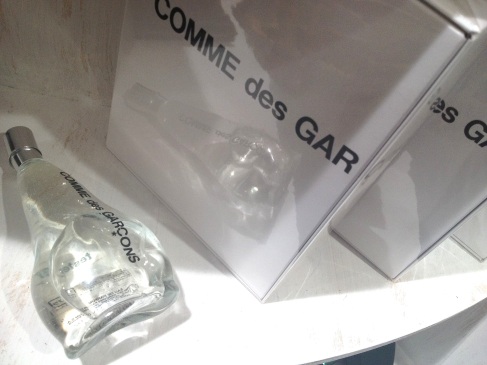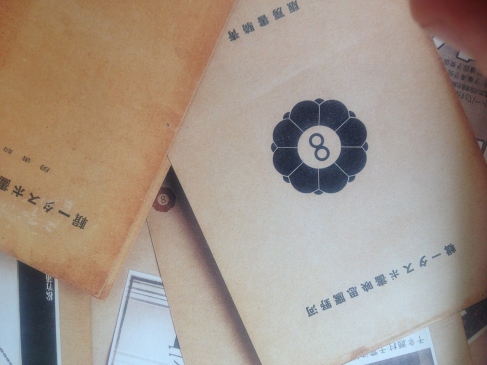
It is absolutely freezing here in Kamakura today. Grey, icy, miserable, with the possibility of sleet or cold rains tumbling down this afternoon as I have to head out into the sticks to do my evening classes.
Ugh. While the temperatures this week, hovering just above or below zero, might seem positively balmy to some of you reading this, especially those suffering under the current deep freeze in North America, the particular problem here is the heating systems, or lack thereof. With a country as hot and humid as Japan is for much of the year, the traditional houses here are not insulated at all, and there is no central heating as Europeans know it, with the hellish result that any heat generated by the detested ‘air conditioners’, those nasty machines that make you sweat yet always seem to have a top layer of cold wind circulating to make you shiver unpleasantly at the same time, or the throat-drying, and dangerous, kerosene heaters we are compelled to use in our house to keep warm, seems to immediately dissipate the minute you switch them off, disappearing like a bastard through the draughty cracks in the doors and windows. I HATE it, and am really yearning for the stolid, stable heat of English hot water radiators, for the suburban living rooms where it is so warm you can just lounge about in a t-shirt and not even think about being cold, or else for spring to just hurry up and arrive.
January, a time of overwork, tons of pre-exam classes, and basic lack of physical well-being, is thus usually somewhat miserable for me, an overextended period of gloom and grey, with no possibility of any warm sunshine for at least another three or four months, and of nothing but neurotically obsessing about how many layers to wear the whole time (the misery of a sweat soaked t-shirt beneath those hot layers, as you deliberate between the dilemma of keeping on the wet t-shirt and hoping it will dry, or having to head into a public convenience and contort yourself into ludicrous positions as you renegotiate your clothing).
HELL!!
Moaning aside, though, to generate some warmth right now, both physical and psychological, one of my pleasing and simple comforts is herb tea, especially just before bed. I have experimented with many kinds of tisanes over the years (lemongrass, chamomile, lavender, lemon balm) and know now which ones have the strongest physiological effects on me personally. Whereas in the morning I need hot, steaming coffee and lots of it, at night my tea of choice is rooibos, a South African plant that is incredibly soothing and sends me to sleep even when I am overtired and agitated. This winter I have been experimenting quite a lot with my night brew, adding different combinations of spices for an added boost, in particular ginger, my vanilla pods from the Javan plantation, nutmeg, and cinnamon, and it has really struck me recently quite how carnal, almost animalic in fact, cinnamon can be, particularly when combined with natural vanilla pods. Where spices like cardamom and nutmeg have a fresh, bracing quality; ginger Chinese verve and fire, and cloves an almost uptight, dark elegance in comparison to cinnamon, my night teas, especially if left brewing for a long time, sometimes take on the slightly naughty aspect of the filthiest orientals: a trace of civet; a very human, bodily aspect that can be almost disconcerting but also deeply mollifying, in a childlike way, when the cold air is surrounding you, and your senses concentrate instead solely on this mothering, sensual taste. The thick, body-hugging glug of mulled wine that has been steeped in cinnamon sticks; cinnamon hots; the smell of cinnamon-sprinkled buns and cakes drifting out from a city bakery as you walk along that dark path with hands tucked in coat pockets as if the world couldn’t really be as bad as you thought ( your senses perking up without your even noticing and you find you have plumped for that Starbucks hot cinnamon roll and latte instinctively, realizing to your horror that you have just consumed 800 calories in one indolent go). Oh well: cinnamon is a palliative: a remedy. Though it is not my favourite spice (that would be clove, or cardamon, or even perhaps saffron), I do think that there is nothing more balancing and heart-repairing in the world of spice. It is the great balancer.
The effect of cinnamon in perfumery is similar to its culinary use – surely the most trustworthy and unthreatening of the spices; easy, familiar, emotionally warm, and although it does not usually feature as the main theme of many fragrances – probably because it is seen as precisely too foody – blended, usually, with orange, mandarin, balsams, exotic florals and other spices for the oriental cargo effect (Cinnabar, Opium); or with animalic ambers and vanilla (Obsession, Obsession Men, Cuir Mauresque) – all of which feature a prominent note of the spice that lends their blends a touch of patisserie snugness and repose, the perfumes we are looking at today are more overtly cinnamonic: tailor-made, surely, for these darker months of winter…….
1
Sunday: 6pm. It has been raining; dark, freezing cold.
You have just done something really bad – been shouted at and belted: and after bawling out your eyes in your bedroom upstairs, and are lying prostrate, aimless, and self-pitying, on top of the bed covers; the taste of hot, angry tears still swirling in your head.
Then – suddenly, after who knows how long, the warm, delicious smell of your mother’s baking apple pie finds its way up the reproachful bannisters, and, gradually, life is again alright.
Warm apples, slow-burning cinnamon; mouth-watering aromas of rich buttered pastry; the lilting promises of melting vanilla ice cream.
This is Ambre Narguilé: an exalting perfume that seems to provoke obsessive reactions in some people (an olfactory method of regression therapy? ‘Remember the pain. But also remember the good times….’), a scent that is truly designed for cuddling up.
An hour after spraying it on, after the sweet shock of the apple strudel opening, Ambre Narguilé is an edible and addictive patisserie classic; gorgeously moreish and emotive with a vivid cinnamon underlay. To get to this point, though, you do have to go through stages of ambery, sugary bulimia; and to be honest, I’m not always sure I am going to make it each time as for me it is just that little bit too sweet. Still, I seem to have got through most of my bottle in one way or another, and I do feel that this scent has really stood the test of time. It is is worth seeking out if you are having a crap week; it is freezing with rain; and you need a sweet, sensory escape.
The perfection of the perfume’s ending, as it hugs to your skin in the softest, dessert-like caress, is the sheerest wintry succour.
2
Discontinued, so probably hard to find now, but I once had the pleasure of using the E Coudray Vanille Cannelle bath oil on a cold winter’s night when staying at a friend’s house, and with the ambery vanilla-orange thickness tumbling from the lip of the bottle I just melted into the steaming hot water in total bliss. That bottle, of the very old Parisian type, standing beside to me on the side of the bath like an old friend, just added to the sensation of romance and escape: a perfectly judged dose of cinnamon, and sweetly clinging vanilla, in the manner of the best, most delicious, French cakes.
3
Rousse (‘the red head’), one of Serge Luten’s less talked about orientals, is a very different, but equally appealing, scent possessed of red-raw spices that jump out and devour you; the fiery taste (and 3D texture) of real cinnamon sticks and cloves in an ambered, woody, and resinous Lutensian setting. It is direct, pungent, and somewhat simple-minded (in the manner of Louve, Lutens’ cherry-almond), but if you like to wear your spice on your sleeve, as I most certainly do, this rough, flushed, russet perfume is perfect: a chic cinnamon bomb to take on the night.
4
A serious cinnamon. As you’d expect from Mr Lorenzo, Incensi is a languorously layered, complicated scent with a certain integrity, the incense of the name not prominent until the drydown where the main feature in this curious blend is more a ginger-bolstered cinnamon emerging from a blast of strange greenness (elemi, leaf notes, galbanum) than the more liturgical scent you might be expecting: the preferred, cooler incensed notes of antiquity lying calm and serious beneath like a cellar (frankincense, benzoin, myrrh, styrax), while the note of cinnamon – unsweetened, potent, and vaguely ecclesiastical, remains curiously prominent throughout.
A cinnamon scent, perhaps, for Pope Francis.
5
If you are male and have always secretly wished you had worn Yves Saint Laurent’s Opium – that brilliant and unforgettable classic for women from the 70’s –balsamic, spicy and orange-laden – but were just too embarrassed to buy a ‘women’s’ perfume, for whatever reason, then here’s your chance. Ambre Cannelle is apparently a part of Creed’s men’s range; and admittedly there are fewer flowers; its physiognomy has more sinew, it’s formula perhaps more refinement, but this scent was obviously the inspiration (along with Estée Lauder’s Youth Dew) for the whole swooning-Jerry Hall-Roxy-Music-addict phenomenon that was Opium – just thirty years before. It is quite a nice scent, actually, with a sexed, ambergris/ musk base that clings to the cinnamon-amber-flecked accord with air of tightened, bodily mystique.
It IS somewhat old fashioned, though; check it out for yourself first before committing (in a floor length fur coat).
6
A very well respected and original cinnamon spice that many cite as their favourite from the Frederic Malle line, for the tightly woven structure; the dense, spiced treatment of orange and geranium over arid, woody finish, and I can certainly see the Noir Epices’ fan club members’ point, but on this occasion, I am afraid, I must beg to differ.
While I can certainly see the appeal of this perfume’s fat-free structure (no musk: no fluffiness: no soft, vanillic contours), its stark angularity, like Campari and orange, which I like in theory for its bitter sunset red but in reality can’t drink, the vile bitterness of this perfume’s orange makes me shudder. I find it quite unendurable on my own skin, though I have to say that I was astonished to find that the perfume I was complimenting on my friend Justin one night at karaoke – warm, sensual, compelling and sexy – was in fact Noir Epices.
Yet another argument for the fact that some perfumes really do smell utterly distinctive on different people.
7
Of the three jaunty little perfumes in the Comme Des Garcons sherbet series, to me, Cinnamon is possibly the least successful. The Rhubarb is surely a delight: the Mint the greenest, mintiest thing you’ve ever smelled, but the cinnamon, with its contrasting (jarring?) notes of hot and cold, is less loveable.
On the other hand, the freshness of the scent and its resemblance to more spicy, ozonic scents like Issey Miyake Pour Homme make it the most commercial of the three, and rather an original take on the note of cinnamon. Like all the sherbets, it is quite fun.
Other cinnamons:
VANILLE CANELLE/ COMPTOIR SUD PACIFIQUE Just what you’d expect from Comptoir– a warm, sexpot aroma of cinnamon in a sweet, ready to wear (for evening) setting.
CINNAMON SPICE/ BODY SHOP Serviceable perfume oil that does the trick in a mumsy, down-at-the-shops kind of way.
CINNAMON BUN / DEMETER &
CINNAMON TOAST/ DEMETER Olfactory holograms for cinnaphiles with bulimic appetites.
Do let me know if there are any other good cinnamon perfumes you can recommend that I am not aware of: I imagine there must be quite a few good ones out there that I haven’t mentioned and I am really in the mood for this smell and taste.
Let’s cinnamon!



























